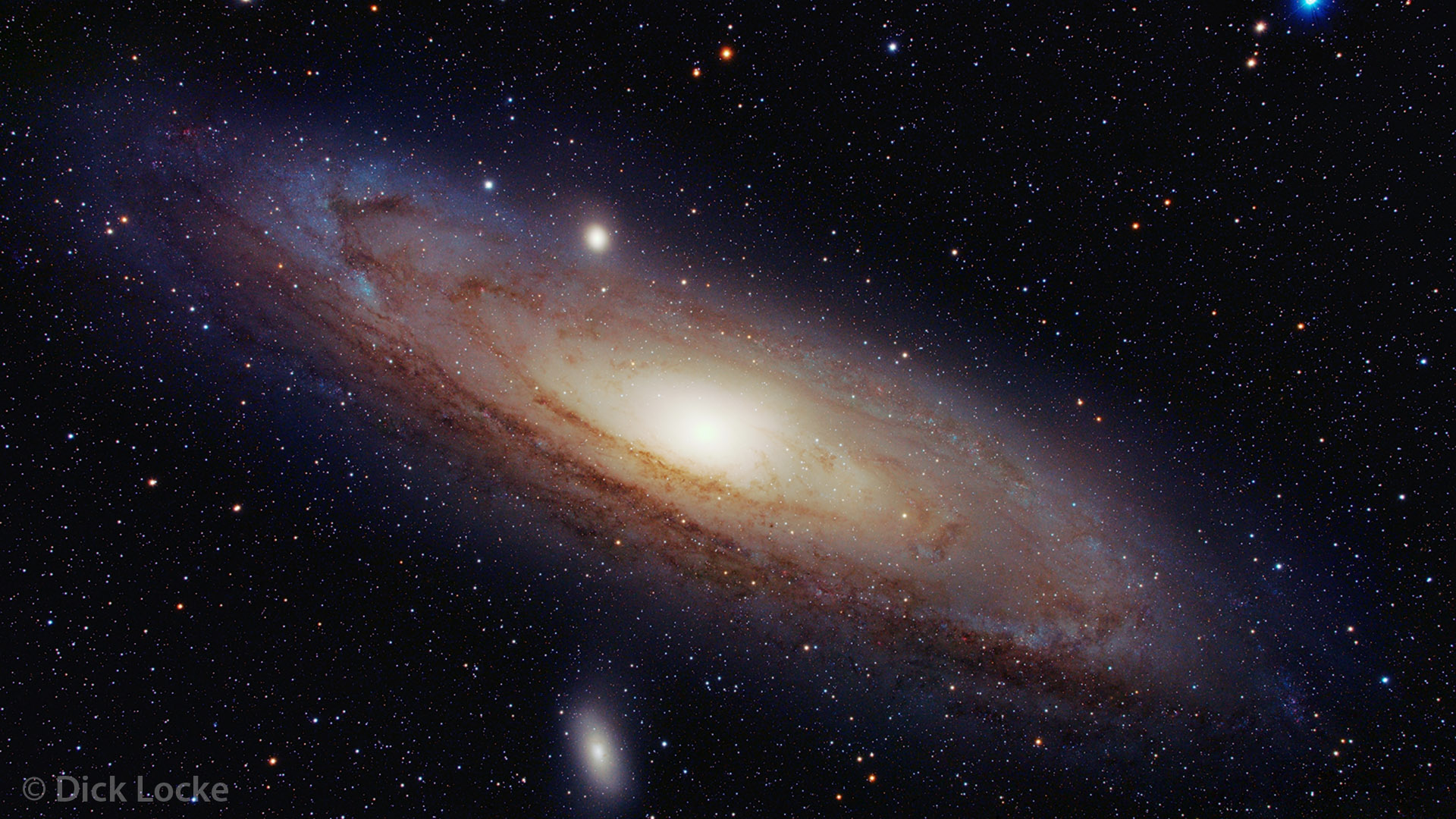
The Andromeda Galaxy: 2016 HD-sized Version

The Andromeda Galaxy, Charles Messier's 31st catalogued object (M31) is about 2,900,000 (2.9 million) light years away. It is the nearest major galaxy to our own "Milky Way" and contains 1 trillion stars. (Wow!) Below M31 is another, much smaller galaxy, M110. M32 is another galaxy shown in this shot; it is the bright patch just above left. See this Wikipedia link for more info on M31. The image above is presented at 1920x1080 pixels.
Capture Details: Takahashi TOA 130
telescope with the new reducer so focal length is 700mm (698) at f5.4 (5.37).
Captured on the
Nikon D810A camera (full frame); FOV is
176x118 arc min, 1.47 arc sec per pixel (just about perfect.) My
TOA 130 page has two "full camera frame" versions of
this object that allow you to check the star quality of the new reducer - quite
excellent I think!. This is the
best 21 * 5 minute frames for 105 minutes total exposure, captured over two
nights 9/28/2016 and 9/29/2016 at
Starry Nights in the Texas Hill Country. My equipment rides on the
AP 900GTO mount.
Equipment Discussion: My previously posted image was from 2010, but I've worked on this object a few times since 2010. Several things have prevented me from updating the 2010 image (below) including this object being a pain to process, it's big and hard to frame, and less than perfect quality of source frames since 2010. The 2010 image is pretty good, also, so there was a high bar set! The seeing was quite good on the two nights I spent on this object and it was close to the zenith. The new Takahashi reducer is excellent and provides noticeably better optical performance than the old version. Stars aren't perfect to the edge of the full frame on a 35mm chip, but they're not bad. Check my Takahashi TOA 130 page (2nd image as I write this) for an un-cropped image with the full-frame camera & reducer.
Processing Notes: Processed via my workflow as described here. My framing didn't perfectly align on the two nights I imaged this object, so I used only the overlapping area from both nights. That makes the framing here a bit more cramped than it might be. The HD aspect ratio cropping presented here also makes things a little cramped vertically, see below for taller versions.
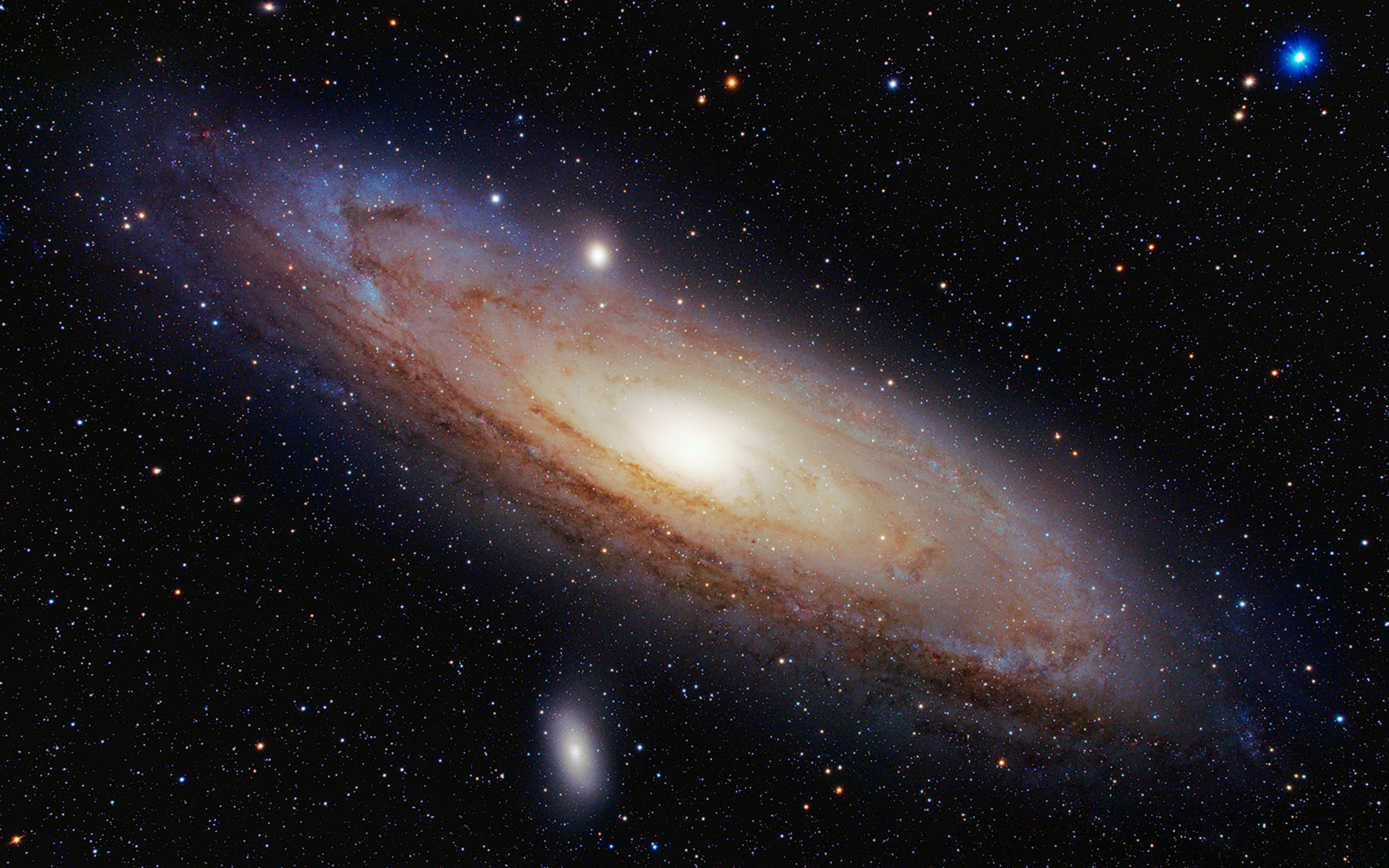
Above: A little "taller" than the previous version with some additional processing. I tried to preserve the core on this one. Better or worse?
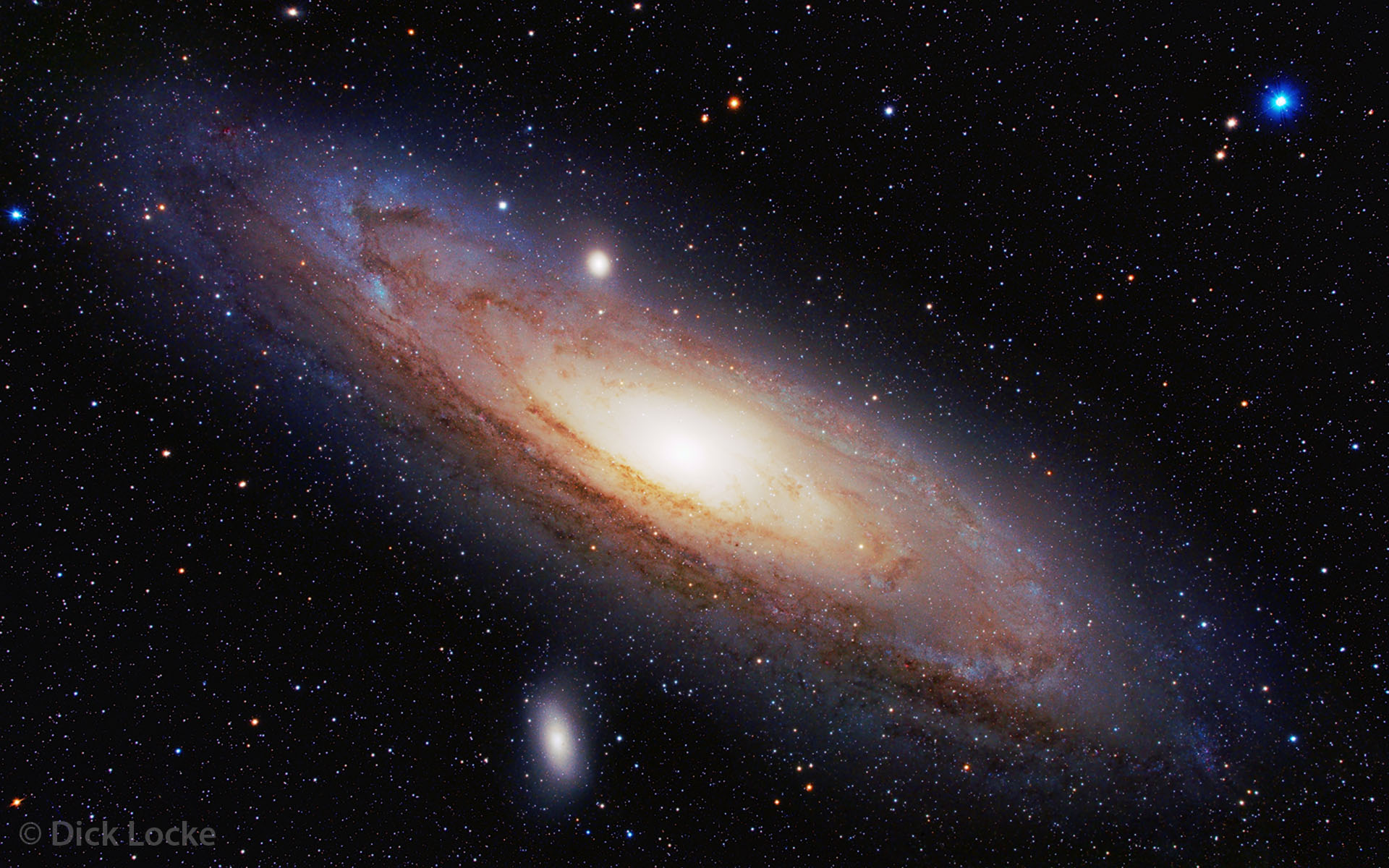
First reprocessing effort, a bit noisy? I let the core blow out a bit.
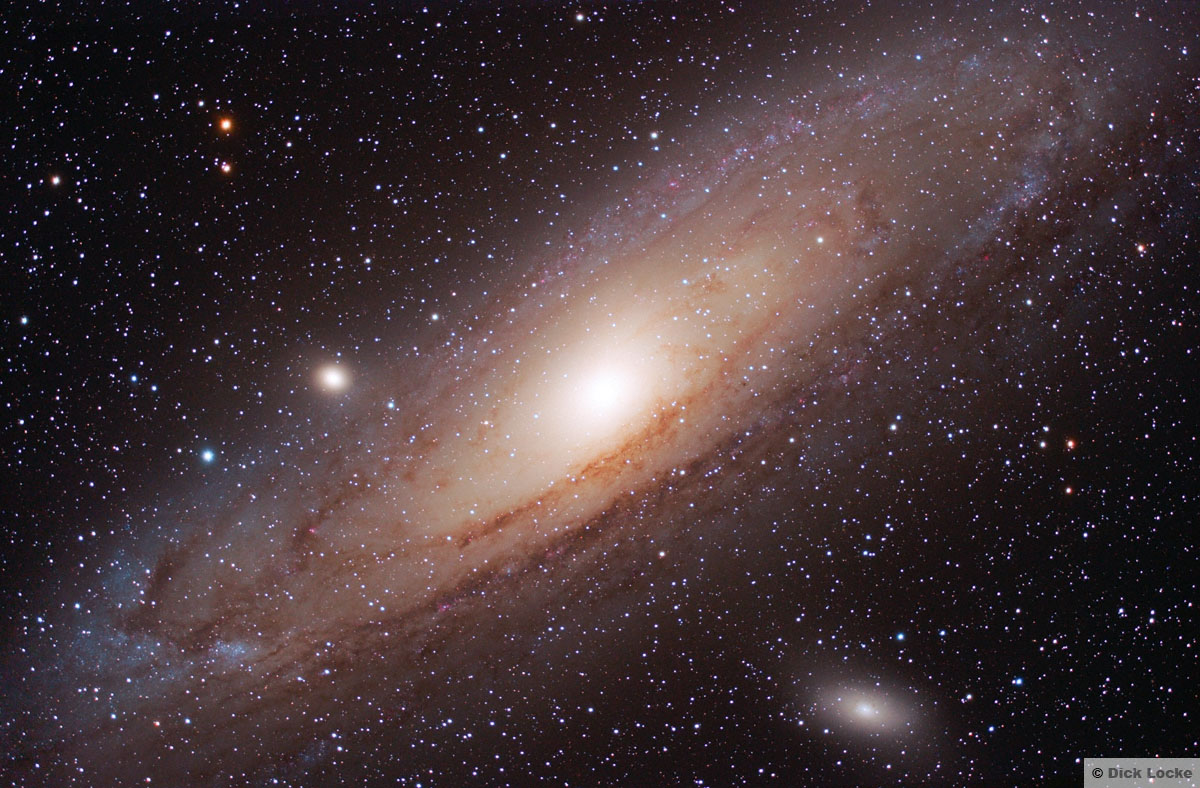
Here's M31, the Andromeda Galaxy. This is the most distant
object we can see from earth "naked eye." The small red areas are caused
by the deep red wavelengths of light given off by the
 Bright
Nebula in the
neighboring galaxy.
Bright
Nebula in the
neighboring galaxy.
See this
Wikipedia link for more info on M31. More: The Andromeda galaxy can be seen as a hazy patch with the naked eye from a dark site. Therefore, it is the most distant object you are likely to see with the unaided eye. It is easily visible with binoculars. In fact, it is too large to fit into the largest field of view of many telescopes, so it is best appreciated with binoculars.
Notes: The image above is from the Fall 2010 Davis Mountains trip, 34*5 minute = 170 minutes total exposure. I was hoping for more exposure time but the weather didn't cooperate and I had to discard a lot of images. The quality minutes I do have, though, come from the famously dark west Texas skies. The Takahashi TOA 130 (a 5" APO refractor) with reducer, and Astro-Physics AP 900GTO mount, QHY8 CCD Camera & normal workflow. December 2010 from the Davis Mountains.
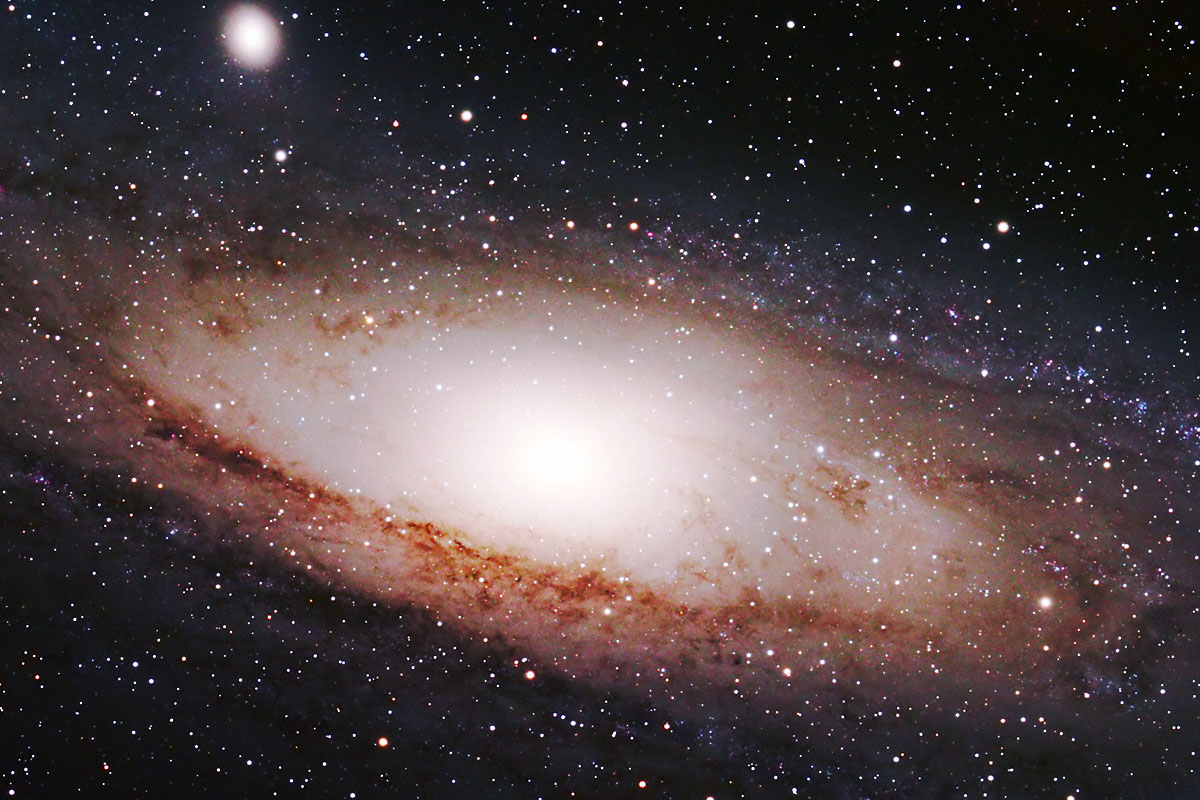
Above: The ruddy dust lanes of M31 have always intrigued me. I took some fresh images during the 2007 Davis Mountains trip and processed to enhance that feature. Image above composed of "only" 16x4 minute = 64 minutes total exposure, ISO 1600. Canon EOS 20Da (unmodified), ISO 800, Takahashi TOA 130 (a 5" APO refractor) with flattener, and Astro-Physics AP 900GTO mount. Davis Mountains, TX, 10/2007. I used my DSLR Workflow including the Lab technique to accentuate the colors. Previously called: M31: Another Perspective
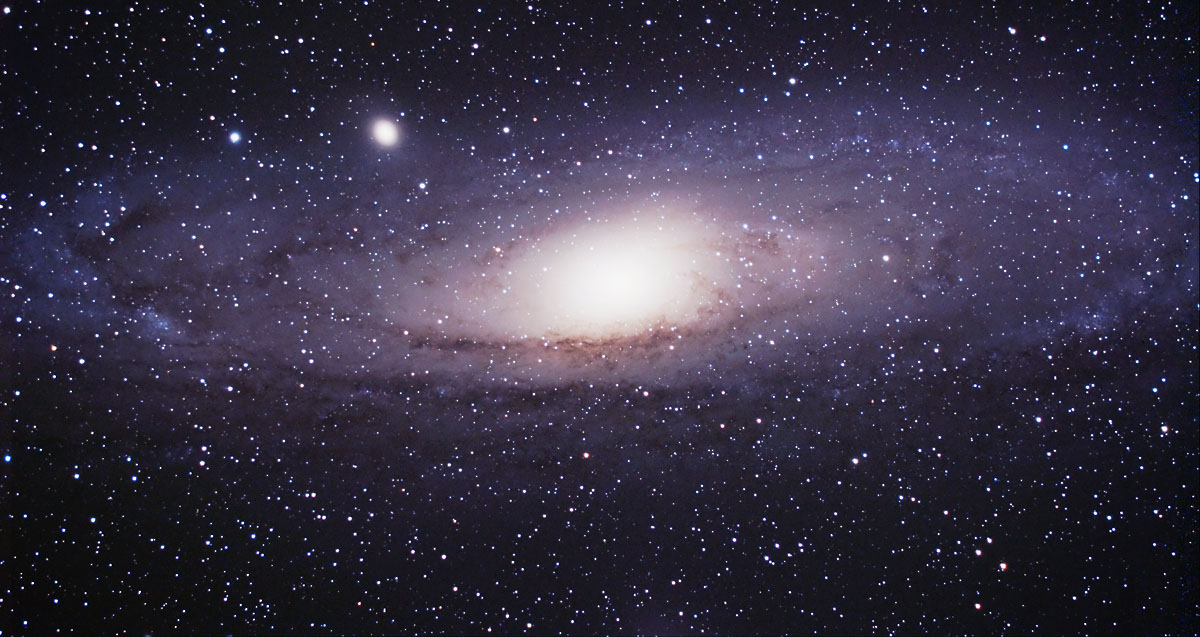
M31, Andromeda Galaxy
"Most Famous Galaxy?" I think so. The Andromeda Galaxy got some name recognition in a Star Trek episode, the one where Andromedons (?) hijacked the enterprise for a 200+ year journey to our nearest galaxy.

Image Notes: Check out the different color balances on these various images. Which do you prefer?
Note the noise and color shift on the bottom image on the far right. That's where the exposures didn't quite overlap. The result is lots of extra noise on the right edge. The top image is a "stack" of about 10 individual exposures over two nights using a Canon 20Da DSLR on my Takahashi TOA 130 (a 5" APO refractor). Exposures were 4 minutes each at ISO 800. Top image: Bias and dark frame processing using Images Plus.
 A starting point for the M31 images on this page: Pretty Flat! |  1st Cut 20Da image. Stack of 6 images, 4 minutes each, ISO800, no darks/lights/in-camera noise reduction. 1200 pixels wide. Some Photoshop Lab processing to accentuate the color differences by steepening the 'a' and 'b' curves. | Featured Astronomy Photos |
Film Images of M31 | Galaxy Index | The new Canon 20Da page. |
 M31, Best Film Effort: See exposure data at bottom of page | Combination of 4 images of about 1, 2, 3, and 4 minutes duration at ISO 1600. Ambient temperature in the mid 30's (F). Takahashi FS-102 with focal reducer, full frame. Autoguided with the STV. |
See M31 in a wide angle shot
|
Best Film Effort Photo image above Info:
Composite of 4 photos of about 1 hour duration each, details to follow
Tak FS-102 prime focus with reducer at 610mm focal length, f5.9
SBIG STV autoguider using Celestron ST-80 guidescope
Losmandy GM-11 mount, Kodak LE 400 film, OM1n camera
Negative Scan, Nikon Coolscan IV ED, Processed in Photoshop
Copyright © 2002-2010, Dick Locke. All Rights Reserved.
Contact and Image Use Information